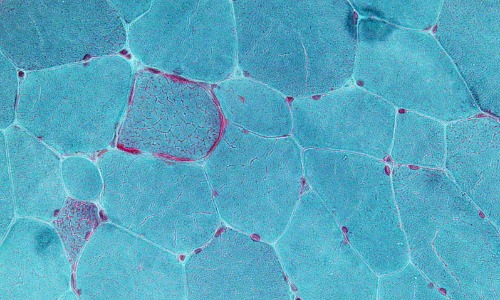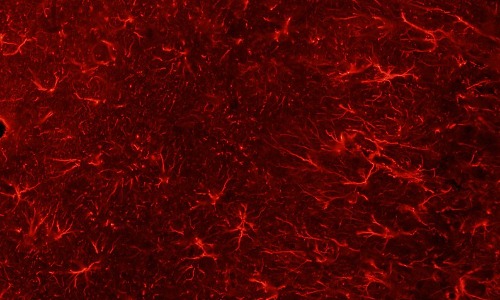Loading
Journal of Cellular Signaling
ISSN: 2692-0638
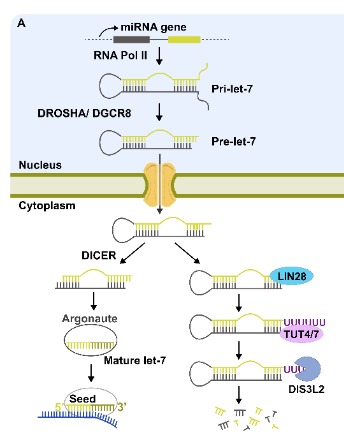
2023
Volume 4, Issue 4, p151-198
Articles published in this issue are Open Access and licensed under Creative Commons Attribution License (CC BY NC) where the readers can reuse, download, distribute the article in whole or part by mentioning proper credits to the authors.
Depleting Cellular Retinoic Acid Binding Protein 1 Impairs UPRmt
Chin-Wen Wei, Thomas Lerdall, Fatimah Najjar, Li-Na Wei
Mitochondrial dysfunction underlines neurodegenerative diseases which are mostly characterized by progressive degeneration of neurons. We previously reported that Cellular retinoic acid Binding protein 1 (Crabp1) knockout (CKO) mice spontaneously developed age-dependent motor degeneration, with defects accumulated in spinal motor neurons (MNs), the only cell type in spinal cord that expresses CRABP1.
J Cell Signal, 2023, Volume 4, Issue 4, p151-162 | DOI: 10.33696/Signaling.4.102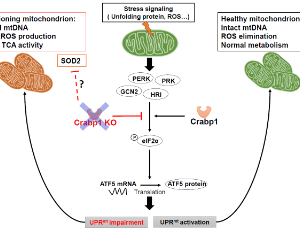
- Abstract |
- Full Text |
- Cite |
- Supplementary File
Presence of Elevated Interleukin – 6 (IL-6) in the Blood of COVID-19 Convalescent Patients (40 – 93 Days) Post Onset of Symptoms Could be an Indicator of Ongoing Activation of the Immune System
J Bolodeoku, C Anyaeche, M Bass, TK Kim
IL-6 concentrations rise with the onset of COVID-19 infection and is detected in 68% of patients on admission but is expected to reduce after the acute phase. IL-6 concentrations at time points: (2-7 days), (6-11 days), (11-15 days) and (13-20 days) after intensive care unit (ICU) admission showed the highest level of IL-6 concentrations at time point 2-7 days, we decided to characterize IL-6 concentrations in serum samples collected in the sera of COVID-19 convalescent patients (40 – 93 days) post onset of symptoms.
J Cell Signal, 2023, Volume 4, Issue 4, p163-168 | DOI: 10.33696/Signaling.4.103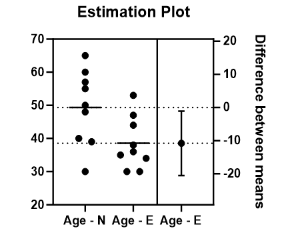
DIS3L2: Unveiling a New Player in Tumorigenesis, with a Key Role in Colorectal Cancer
Juan F. García-Moreno, Paulo Matos, Luísa Romão
DIS3L2 is a 3’-5’ exoribonuclease that recognizes and degrades uridylated transcripts in an exosome-independent manner and participates in several RNA degradation pathways, such as the nonsense-mediated mRNA decay, or the surveillance of aberrant structured non-coding RNAs. Although some studies have linked DIS3L2 to tumorigenesis and cancer-related processes, its exact role in the development and progression of cancer
J Cell Signal, 2023, Volume 4, Issue 4, p169-177 | DOI: 10.33696/Signaling.4.104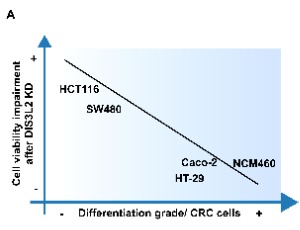
Optogenetics Sheds Light on Brown and Beige Adipocytes
Aaron Clifford Brown
Excessive food intake leads to lipid accumulation in white adipose tissue, triggering inflammation, cellular stress, insulin resistance, and metabolic syndrome. In contrast, the dynamic energy expenditure and heat generation of brown and beige adipose tissue, driven by specialized mitochondria, render it an appealing candidate for therapeutic strategies aimed at addressing metabolic disorders.
J Cell Signal, 2023, Volume 4, Issue 4, p178-186 | DOI: 10.33696/Signaling.4.105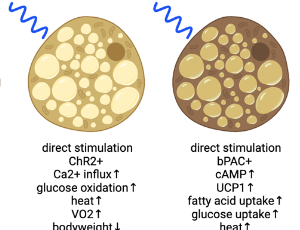
Retinoic Acid Induced Cell Signaling as a Counter Against Disease
Justin H. Franco, Zhixing K. Pan
Many disease processes result from disruption of physiologic cell signaling pathways. Cancer often develops from the loss of cell cycle regulation, while inflammatory disease results from dysregulated immune activity. Likewise, many microbial infections avoid immune clearance by interfering with cellular antimicrobial pathways. Retinoic Acid (RA) is a dynamic compound, derived from vitamin A, that can regulate various signaling pathways.
J Cell Signal, 2023, Volume 4, Issue 4, p187-198 | DOI: 10.33696/Signaling.4.106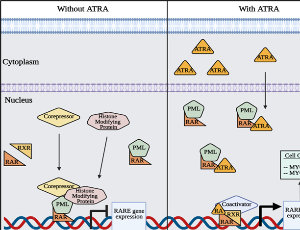
Recommended Articles
COVID-19 Clinical Research
While the global COVID-19 pandemic has challenged the entire humanity and health systems, it also triggered researchers to urgently perform clinical trials to assess the safety and efficacy of many agents and modalities to combat COVID-19. As of April 22, over 650 clinical studies have been registered both in USA and internationally. Results from these studies are also coming at a brisk pace in this unprecedented emergency.
Therapeutic Values of Ketamine for COVID-19-Cared Patients: An Expert’s Point of View
Ketamine has long been used in the field of anesthesia [1]. Its rapid and long-acting analgesic effects associated with its dissociative properties have also established its use in prehospital and emergency department patients.
A Bioinformatics Protocol for Rational Design of Peptide Vaccines and the COVID-19 Rampage
The currently ongoing coronavirus pandemic, the SARSCOV- 2, interchangeably referred to as the COVID-19 infection, has in a short span of time altered the ways and means of almost all of mankind. So strong has been its effect that all human activity ceased in one way or another for a considerable time, led to significant loss of life and economic drain of.
Lessons Learnt from COVID-19: How Can We Prepare for Another Pandemic?
Five months into the COVID-19 pandemic, the U.S. death toll from the virus has now surpassed 100,000 people. Many more cases remain nationwide, while an unknown number of patients currently harbor the virus asymptomatically. While health officials are now optimistic regarding the decline in prevalence and number of deaths due to COVID-19 and the possibility of a vaccine by the fall, we cannot lose sight of the bigger picture: the next pandemic.
Safety of Using Rituximab Therapy During COVID-19 Pandemic
Rituximab is a chimeric (20% rodent and 80% human) monoclonal antibody that binds to the CD20 antigen present on the cell surface and leads to depletion of mature B-cells [1,2]. It is the first approved monoclonal antibody to be used in the therapy of indolent B-cell non- Hodgkin’s lymphoma and chronic lymphocytic leukemia
Educators as Essential Workers in the Era of COVID-19: Applying Lessons from Disaster Recovery
In the article, “Mental Health Framework: Coronavirus pandemic in post-Katrina New Orleans” [1], Shervington and Richardson offer recommendations about how to anticipate and address disaster-related, trauma exposures associated with the coronavirus pandemic
How Well Do Hemodialysis Patients Respond to the BNT162b2 mRNA COVID-19 Vaccine?
In January 2020, the World Health Organization (WHO) classified COVID-19 to be a Public Health Emergency of International Concern and declared it a pandemic on March 11, 2020 [1]. Over one hundred and eighty-five million people have been infected by SARS-CoV-2 and roughly four million have died worldwide so far
Predicting COVID-19 Hospitalized Patients’ Outcome with Homocysteine
The COVID-19 pandemic has provoked a global, rapid increase of cases due to the high infectivity of the etiological agent, COVID-19 virus. In February 2021, over 110 million confirmed COVID-19 cases with 1 million deaths were reported worldwide (www.who.int).
Energy Expenditure and Nutrition in Neurogenic Obesity following Spinal Cord Injury
Worldwide, obesity is a public health concern and a metabolic ailment characterized by excessive adipose tissue accumulation resulting from an imbalance of energy expenditure and energy intake [1]. This disorder is a known risk factor for cardiovascular disease, type 2 diabetes mellitus, dyslipidemia, hypertension, and metabolic
Dexamethasone: The First Drug to be Shown to Decrease Mortality in Critically Ill Patients with COVID-19
The precise role of corticosteroids for treatment of coronavirus disease 2019 (COVID-19) is unclear due to lack of randomized trials.
How to Prevent Rehospitalization in Patients with COVID-19
Since December 2019, Severe Acute Respiratory Syndrome Coronavirus 2 (SARS-CoV-2) caused by 2019 Novel Coronavirus (2019-nCoV) has resulted in 89,000 cases of Corona Virus Disease 2019 (COVID-19), formerly known as Novel Coronavirus Pneumonia (NCP) in China, including 2,450 deaths.
Improving Obesity and Insulin Resistance by Targeting Skeletal Muscle MKP-1
Obesity has reached a global epidemic and it predisposes to the development of insulin resistance, type 2 diabetes and related metabolic diseases. Current interventions against obesity and/or type 2 diabetes such as calorie restriction, exercise, genetic manipulations or established pharmacological treatments have not been successful for many patients with obesity and/or type 2 diabetes.
Classical Drug and its New Role in COVID-19 Management
COVID-19 is the new emerging viral infection that already cause global public health problem [1-3]. More than 220 countries/territories are already attacked and there are more than 17 million patients around the world
Preparing for a More Public Health-Aware Practice of Medicine in Response to COVID-19
After one year in a pandemic, we mourn the loss of over half a million lives in the United States, and over four million worldwide, and remain concerned over the challenges facing the families of 35 million people in the United States, and 200 million worldwide, who have suffered from cases of COVID-19.
Quantifying Respiratory Airborne Particle Dispersion Control Through Improvised Reusable Masks: The Physics of Non-Pharmaceutical Interventions for Reducing SARS-CoV-2 (COVID-19) Airborne Transmission
In light of the current pandemic from rapid transmission of the severe acute respiratory syndrome coronavirus 2 (SARS-CoV-2 or COVID-19) and significant morbidity, there has been inconsistent medical guidance given to the public regarding the wearing of non-medical improvised fabric masks or face coverings to reduce the transmission of COVID-19.
The Use of Hydroxychloroquine and Interferons for the Prophylaxis of COVID-19
At the beginning of Covid-19 pandemic, we proposed to use hydroxychloroquine (HCQ) and intranasal interferon (IFN) a-2b spray to prevent SARS-CoV-2.
Rehabilitation Providers’ Experiences with Rapid Telerehabilitation Implementation During the COVID-19 Pandemic in the United States
Telehealth has been around since the 1960s as a healthcare delivery modality, though it did not gain widespread acceptance as a viable and reliable clinical tool until the late 1990s, when digital imaging and high speed, high bandwidth telecommunications technology became widely available [1]. Historical boundaries to its acceptance and
COVID-19 Disease and SARS-CoV-2 Vaccination in Patients with Cancer
Since the declaration of COVID-19 as a pandemic in March 2020 [1], there have been more than 100 million reported cases of COVID-19 worldwide and more than 2.1 million deaths [2].
COVID-19 and the Health of Illicit Substance Users: Preliminary Analysis from Illicit Drug Transaction Data
While much attention has been given to how COVID-19 patients are treated (or fail to be treated), the impact of the pandemic on illicit drug users remains largely undiscussed
Gastrointestinal Manifestations of COVID-19: An Overview
The Coronavirus disease 2019 (COVID-19) is an infectious disease caused by the new coronavirus of severe acute respiratory syndrome 2 (SARS-CoV-2), single-stranded, positive sense, spherical RNA virus with spikes protein that protrude on its surface giving the appearance of a crown, from the Latin corona. It belongs to the large family of coronaviruses (CoVs) and the genus β-coronavirus. COVID-19 can involve manifestations in the respiratory system, as well as other biological systems, as a intestinal.
Trending Special Issues
About Scientific Archives
Scientific Archives is a global publisher initiated with the mission of ensuring equal opportunity for accessing science to research community all over the world. Spreading research findings with great relevance to all channels without any barrier is our goal. We want to overcome the challenges of Open Access with ensured quality and transparency.

